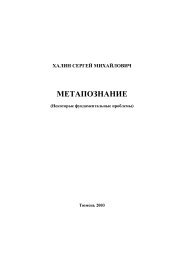The Economic History of Byzantium - Dumbarton Oaks
The Economic History of Byzantium - Dumbarton Oaks
The Economic History of Byzantium - Dumbarton Oaks
You also want an ePaper? Increase the reach of your titles
YUMPU automatically turns print PDFs into web optimized ePapers that Google loves.
1014 NICOLAS OIKONOMIDES<br />
too, would have been substantial and must have represented a considerable drain on<br />
the state treasury.<br />
We have no information to allow us to assess the significance <strong>of</strong> the sum represented<br />
by the salaries paid to civilian employees, though we can assume that it was not particularly<br />
great since many <strong>of</strong> them were paid, wholly or in part (though generously, see<br />
above, p. 1009), by the citizens who used their services. <strong>The</strong>se compulsory contributions<br />
in money or in kind were <strong>of</strong>ten proportional to the value <strong>of</strong> the issue under<br />
consideration; excesses were frequent, and the state was repeatedly compelled to attempt<br />
to stamp them out.<br />
Our information about payment <strong>of</strong> the roga indicates that it was handed out once a<br />
year, despite the rigidity this created and the lengthy period for which large quantities<br />
<strong>of</strong> gold coin were destined to be immobile. We can be sure that the roga was paid once<br />
ayear, for the entire year, in the case <strong>of</strong> senior <strong>of</strong>ficials and titleholders, for whom the<br />
receipt <strong>of</strong> the money from the hands <strong>of</strong> the emperor himself or his aide was <strong>of</strong> great<br />
symbolic significance and created a personal bond with authority. <strong>The</strong> roga <strong>of</strong> the<br />
themes was also paid in a single installment, in those years in which the soldiers were<br />
summoned to arms and inspected, a process called the adnoumion, which meant precisely<br />
“pay parade.” However, one can hypothesize—and it is no more than a hypothesis—that<br />
the roga <strong>of</strong> the mercenaries who were on long-term hire was paid in installments,<br />
perhaps on a monthly basis. What we do know for sure is that the men who<br />
were enlisted on a circumstantial basis, for a single campaign, and whose discipline<br />
could thus not be guaranteed, were paid by the month, 108 but <strong>of</strong> course this was done<br />
to ensure that they would remain at their posts throughout the campaign.<br />
Afurther item <strong>of</strong> expense has to be mentioned with respect, primarily, to the army:<br />
the philotimiai (literally, “honor payments”), ceremonial distributions <strong>of</strong> money or silk<br />
cloth made by the emperor as additional incentives for his servants when a campaign<br />
was in the <strong>of</strong>fing or when he wished toreward a distinguished act. 109 Although these<br />
handouts were undoubtedly <strong>of</strong> minor economic significance since they involved <strong>of</strong>ficers<br />
primarily, they took place at frequent intervals—now in one place, now in another—and<br />
consequently represented a regular item <strong>of</strong> state expenditure.<br />
<strong>The</strong>se “extraordinary” items <strong>of</strong> expenditure, which became regular because they<br />
were repeated in various parts <strong>of</strong> the empire, included ceremonial gifts from the emperor<br />
called apokombia, distributed among groups <strong>of</strong> <strong>of</strong>ficials on occasions such as the<br />
festivities <strong>of</strong> the Brumalia (at the winter solstice). <strong>The</strong>re were predetermined tables for<br />
these payments, and each beneficiary received a sum in accordance with his rank on<br />
thebasis <strong>of</strong> that paid to the person at the head <strong>of</strong> the list. 110 <strong>The</strong> largest <strong>of</strong> the apokombia<br />
was that which the emperor paid into the c<strong>of</strong>fers <strong>of</strong> the Great Church, for the patriarch<br />
and the clergy <strong>of</strong> Hagia Sophia.<br />
Large sums to serve the purposes <strong>of</strong> imperial “propaganda” were spent on charitable<br />
108 E.g., the Mardaitai <strong>of</strong> the west. De cer., 1:668.<br />
109 See, for example, De cer., 1:471, 485–86.<br />
110 Cf. Oikonomides, Listes, 225–31.








